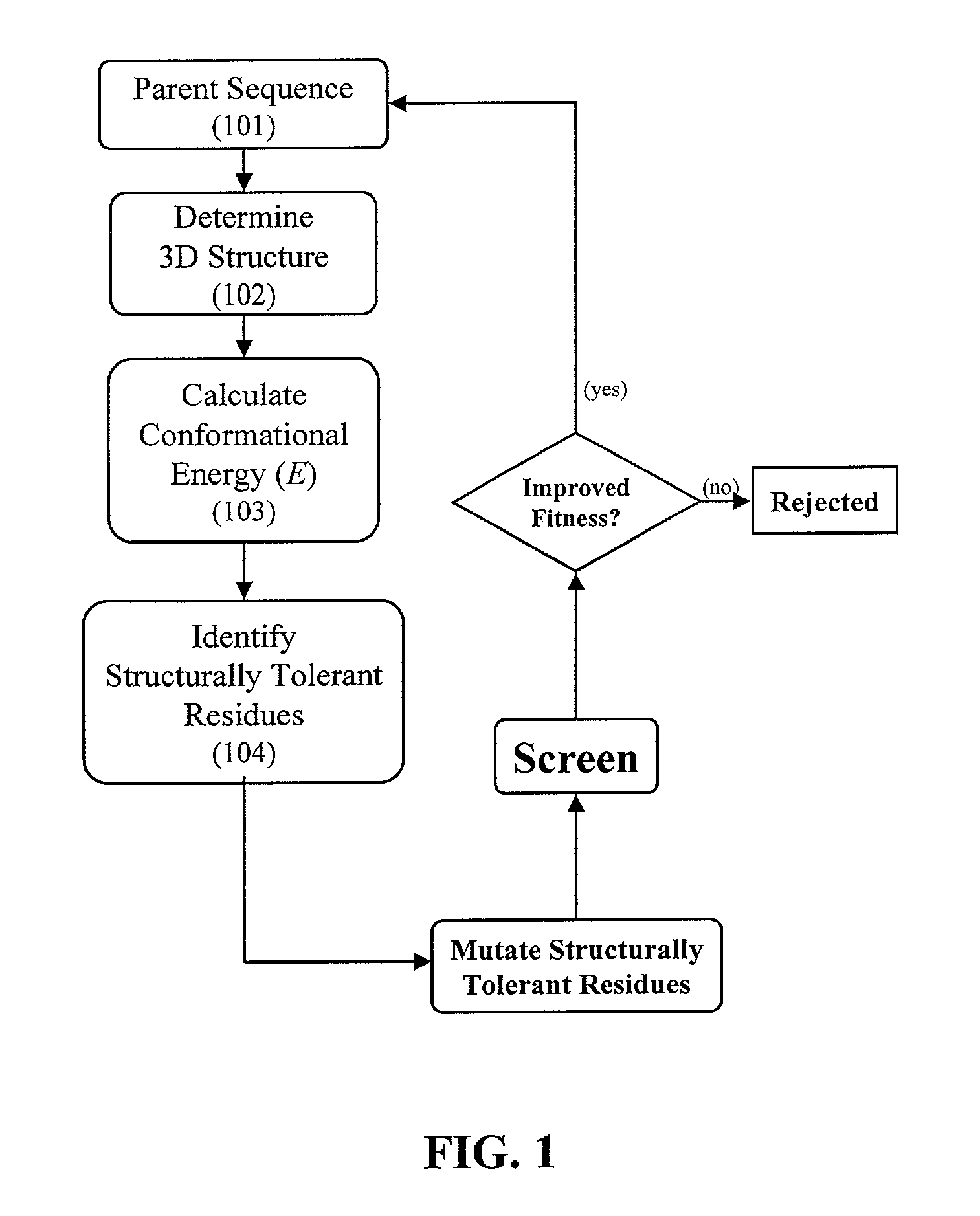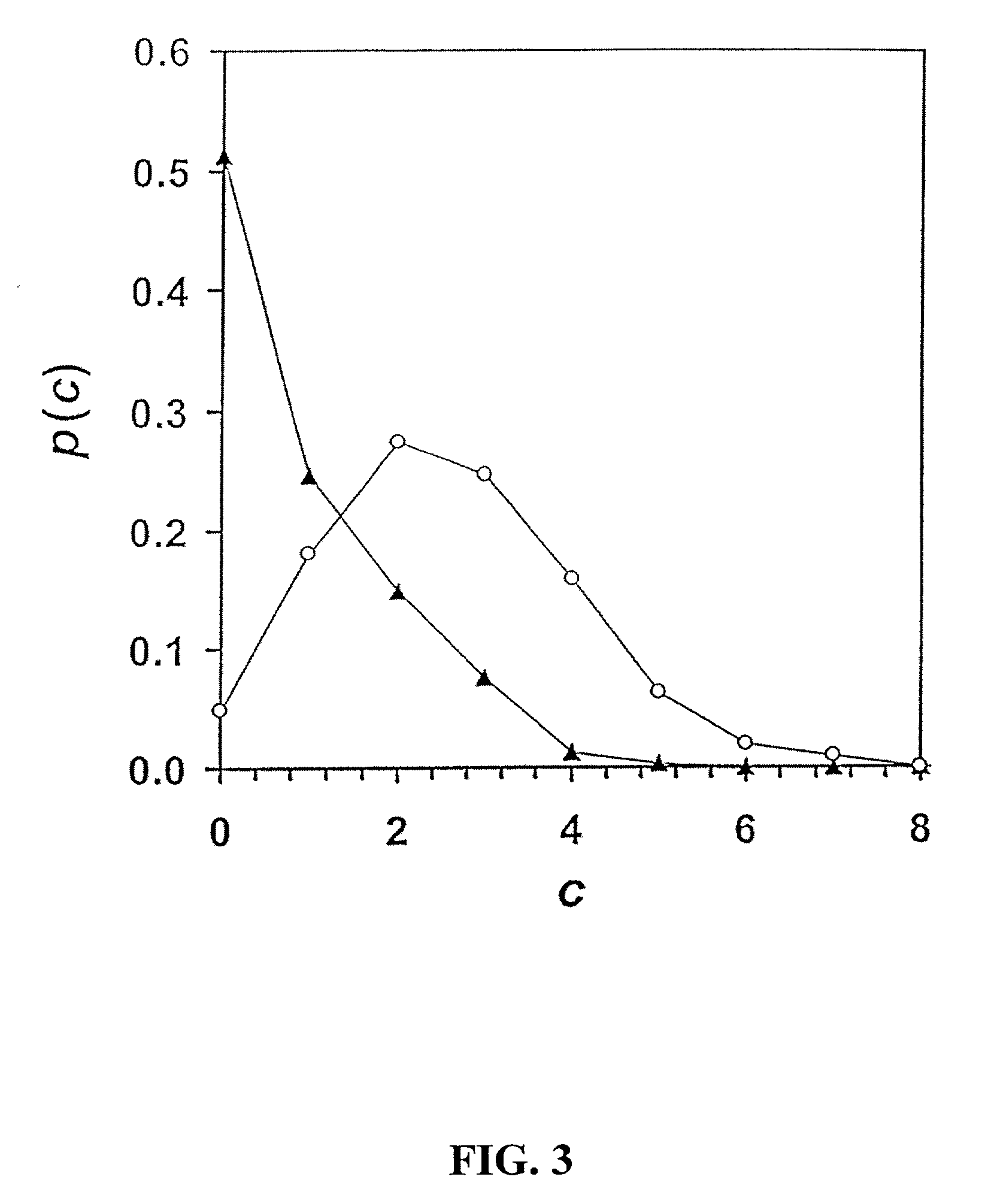Computationally targeted evolutionary design
a technology of evolutionary design and computational targeting, applied in the field of biomolecular engineering and design, can solve the problems of long process, inability to produce or preserve desirable changes in nature, and scientists searching for proteins with improved properties have had the very difficult task of searching for changes in proteins, etc., to achieve the effect of easily and efficiently identifying novel sequences and computational tractability
- Summary
- Abstract
- Description
- Claims
- Application Information
AI Technical Summary
Benefits of technology
Problems solved by technology
Method used
Image
Examples
Embodiment Construction
[0036] The invention overcomes problems in the prior art and provides novel methods which can be used for directed evolution of biopolymers such as proteins and nucleic acids. In particular, the invention provides methods which can be used to identify residues of a polymer where mutations are most likely to produce one or more improved properties. By preferentially mutating these residues, the sequence space for a given polymer may be more efficiently searched. Mutant or variant polymers having one or more improved properties may be more readily identified while simultaneously reducing the number(s) of mutants screened.
[0037] The inventors have discovered, in particular, that the probability of a beneficial mutation occurring at a highly coupled residue decreases significantly as the "fitness" of the parent polymer increases. Highly coupled residues in a polymer will generally require several simultaneous mutations at other residues to demonstrate improvement, e.g., in a directed ev...
PUM
| Property | Measurement | Unit |
|---|---|---|
| melting temperature | aaaaa | aaaaa |
| Tm | aaaaa | aaaaa |
| Tm | aaaaa | aaaaa |
Abstract
Description
Claims
Application Information
 Login to View More
Login to View More - R&D
- Intellectual Property
- Life Sciences
- Materials
- Tech Scout
- Unparalleled Data Quality
- Higher Quality Content
- 60% Fewer Hallucinations
Browse by: Latest US Patents, China's latest patents, Technical Efficacy Thesaurus, Application Domain, Technology Topic, Popular Technical Reports.
© 2025 PatSnap. All rights reserved.Legal|Privacy policy|Modern Slavery Act Transparency Statement|Sitemap|About US| Contact US: help@patsnap.com



